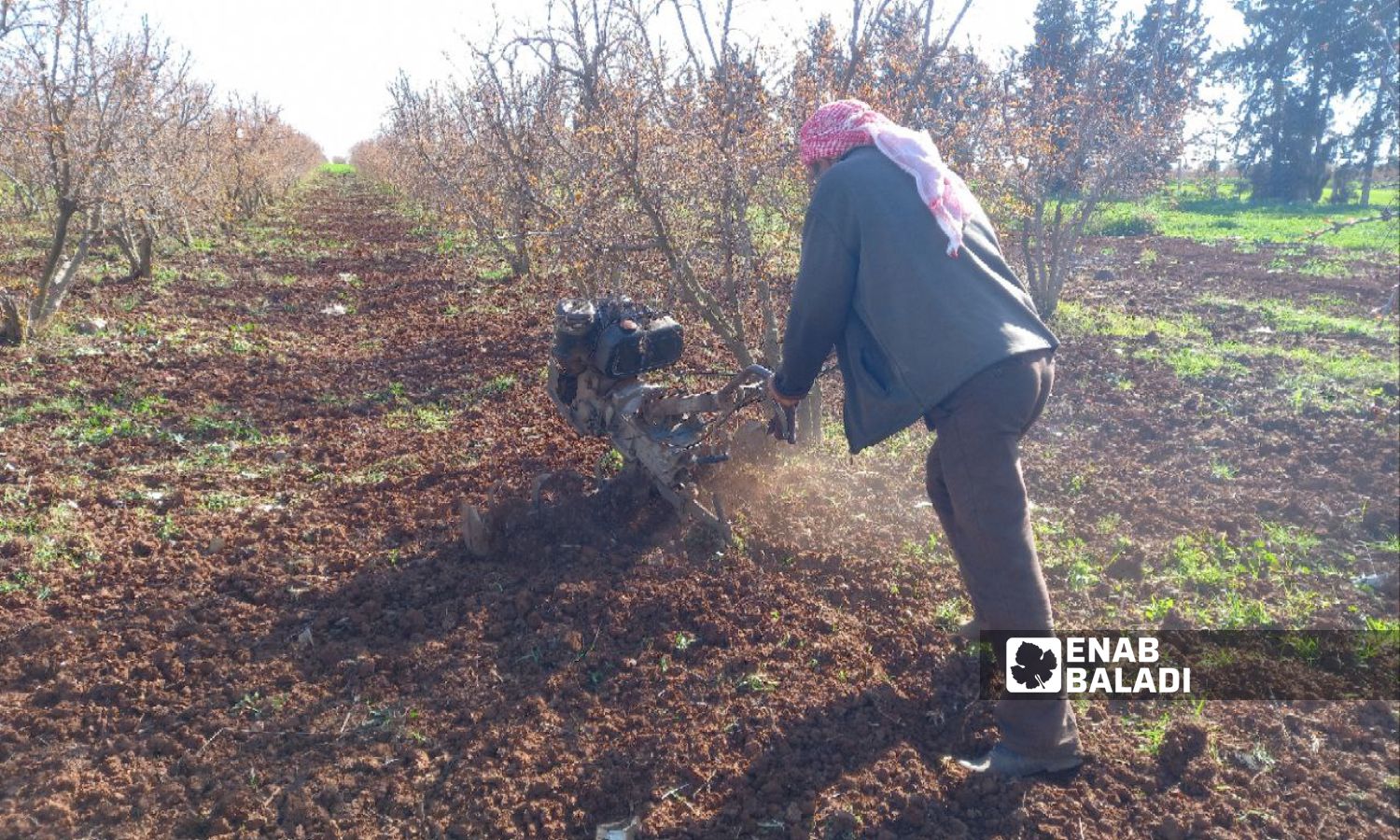



Daraa – Halim Muhammad
Forage crops have expanded in Daraa at the expense of vegetable crops, as farmers and livestock breeders in Daraa are keen on securing local fodder to reduce production costs for the breeders by lowering the costs of feed, which erases the profit margin for the breeder.
Fodder crops have provided an economic return for farmers as they are rain-dependent crops.
Youssef al-Salem, 38, a livestock breeder in the western countryside of Daraa, planted barley and fava beans on his land, and the rainfall at the end of December 2023 contributed to the germination of the crop.
Al-Salem told Enab Baladi that his goal in planting barley and fava beans is to secure and store feed to crush and convert into feed for his cattle over periods that may extend to a full year.
He mentioned that he purchases a 50-kilogram bag of feed for 220,000 Syrian pounds, and when the feed materials are stored, the cost of the feed bag decreases according to the quantity of the stored materials.
The breeder adds approximately 15 kilograms of barley, 15 kilograms of fava beans, 10 kilograms of wheat, and 5 kilograms of corn and bran to the feed mixture.
By securing barley and fava beans, the breeder saves half the feed cost. There is also an increase in the cultivation of “Jilbana,” “Karsana,” “Baykia,” and “Na’mana” crops that are used as feed for sheep and cattle.
Al-Salem explained that feed merchants buy the materials during the harvest period and sell them at higher prices after the season ends. Therefore, he seeks to store these materials from his land production, clarifying that the high cost of fodder affects his profits from milk, as the price goes towards the cost of the feed.
The price of a kilogram of cow’s milk in Daraa reached 4,500 Syrian pounds, sold directly to the merchant.
The exchange rate of the US dollar surpassed 14,500 Syrian pounds, according to the S-P Today website, which specializes in foreign currency exchange rates.
Some livestock breeders explained to Enab Baladi that their goal in planting is to secure feed for their cattle after the increase in feed prices.
The areas planted with barley for this season reached 454,234 hectares, at a rate of 91% of the production plan, according to the statements of the Director of Plant Production at the Ministry of Agriculture, Ahmed Haider, to the Syrian Arab News Agency (SANA).
Meanwhile, the Director of Agriculture in Daraa, Bassam al-Hashish, expects an increase in the barley crop areas in the agricultural plan, as the areas planted with barley in Daraa reached 39,277 hectares, at a rate of 100% of the plan, while the cultivation process is still ongoing, according to the government newspaper “Al-Thawra.”
Some farmers in the countryside of Daraa have turned to cultivating fodder crops in search of a financial return to compensate for the abandonment of vegetable crops due to the high production costs and the scarcity of irrigation water, especially as fodder crops do not require irrigation water.
The agricultural areas in the countryside of Daraa are witnessing a scarcity of irrigation water after the decline in the water levels of the wells and the drying up of surface lakes and springs, which were a major source of water.
Ali, 30, from the residents of Tal Shihab in the countryside of Daraa, planted his 20-donum land with barley and fava beans because he did not want to repeat planting wheat, as the produce of the crop declines if the same planting is repeated.
Ali stated that after the drying up of irrigation water and the high cost of agricultural necessities such as labor, fertilizers, medicines, and others, farmers find forage crops a source that brings them financial returns instead of leaving the land uncultivated.
Even though fava beans are a legume crop, there is a trend to cultivate them in Daraa, as grain mills have become dependent on it as a source of protein within the feed mixture. This has increased the demand for it in the market and mills, according to Ali, as some farmers sell the green fava beans for consumption while others leave them to dry and then harvest and sell them (as dry fava beans) to restaurants and feed mills.
There are several varieties of fava beans, including Cypriot, Maltese, and Turkish.
Agricultural engineer Khaled Suleiman told Enab Baladi that the increasing interest in forage farming is due to its dependence on rainfall, its low need for fertilizers and medication spraying, or the need for labor, like vegetable crops.
Suleiman added that the high cost of farming and the drying up of irrigation water have pushed farmers to raise livestock and, consequently, to cultivate their land with forage crops.
In an effort to reduce the severity of feed imports, the Directorate of Agriculture in Daraa has increased the areas of forage crop cultivation in the agricultural plan for the current season.
According to Wael al-Ahmad, the director of the Planning and International Cooperation Department at the Agriculture Directorate in Daraa, the planned areas to be cultivated reached 11,850 hectares for the current season, compared to 7,704 hectares for the previous season.
if you think the article contain wrong information or you have additional details Send Correction